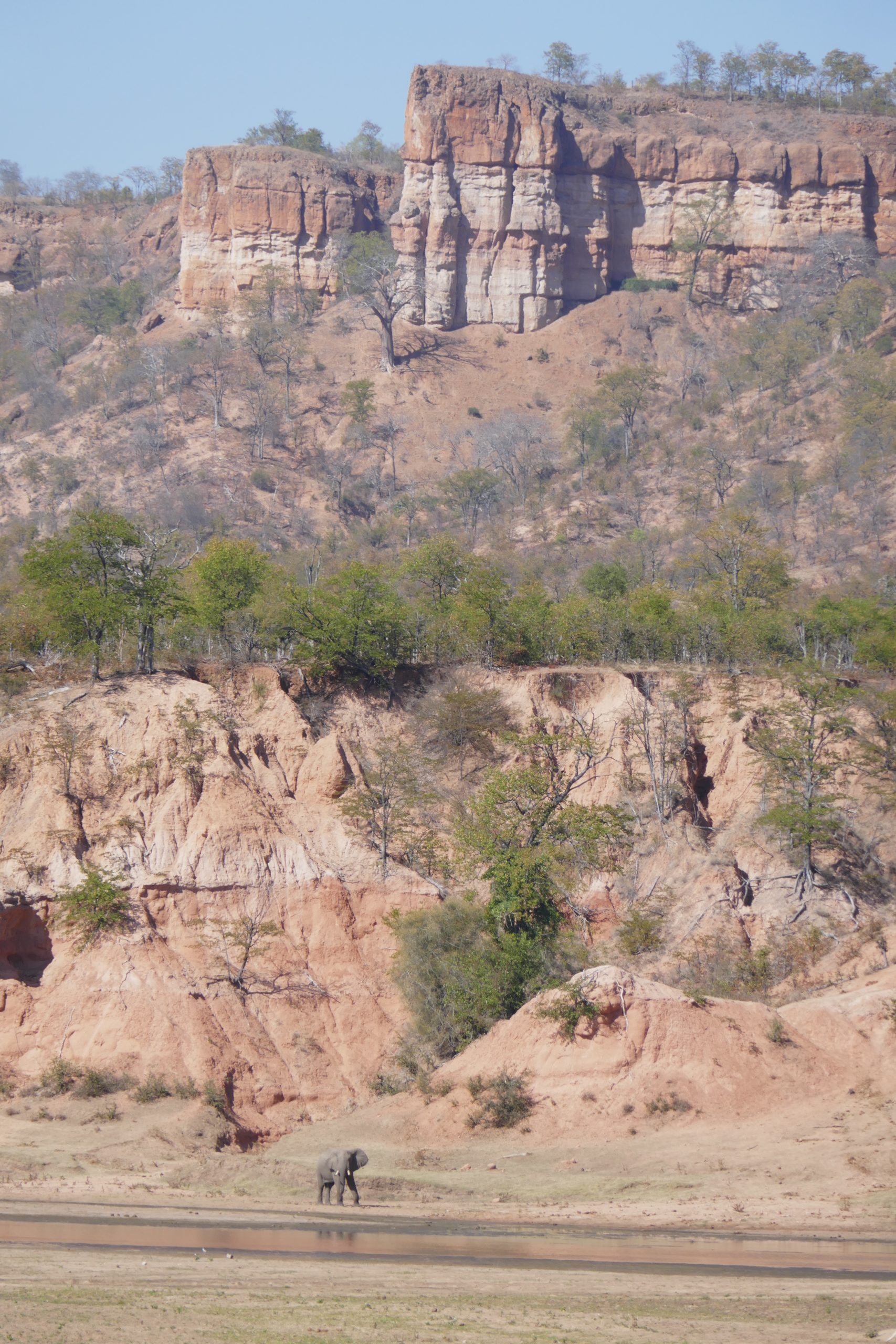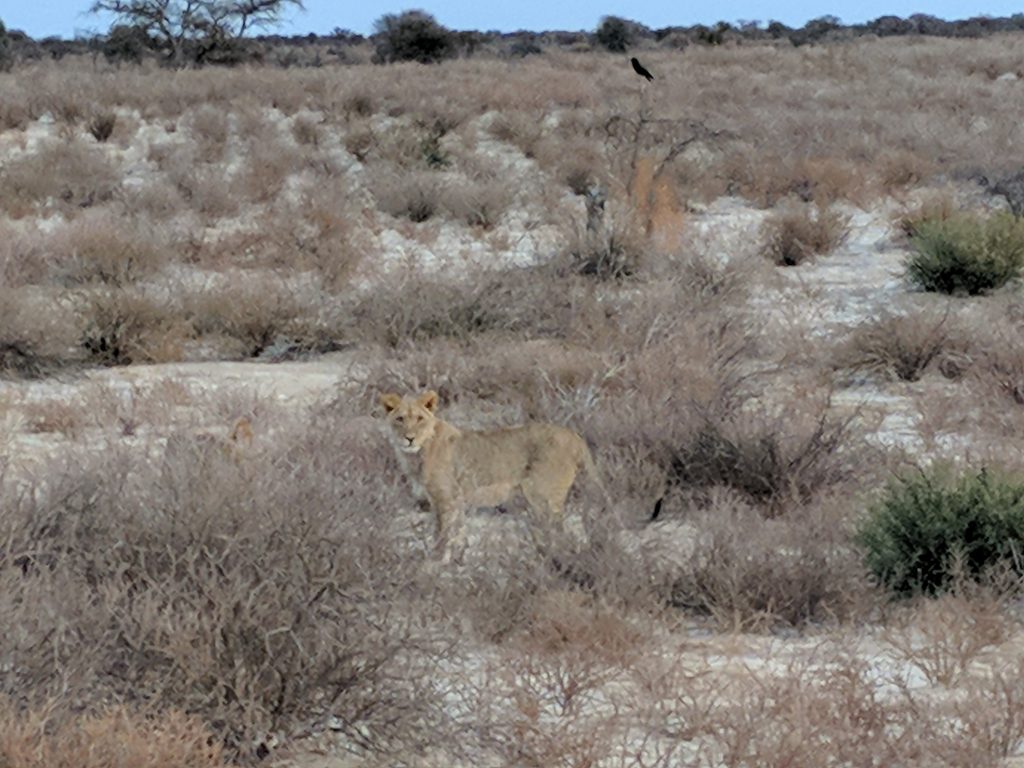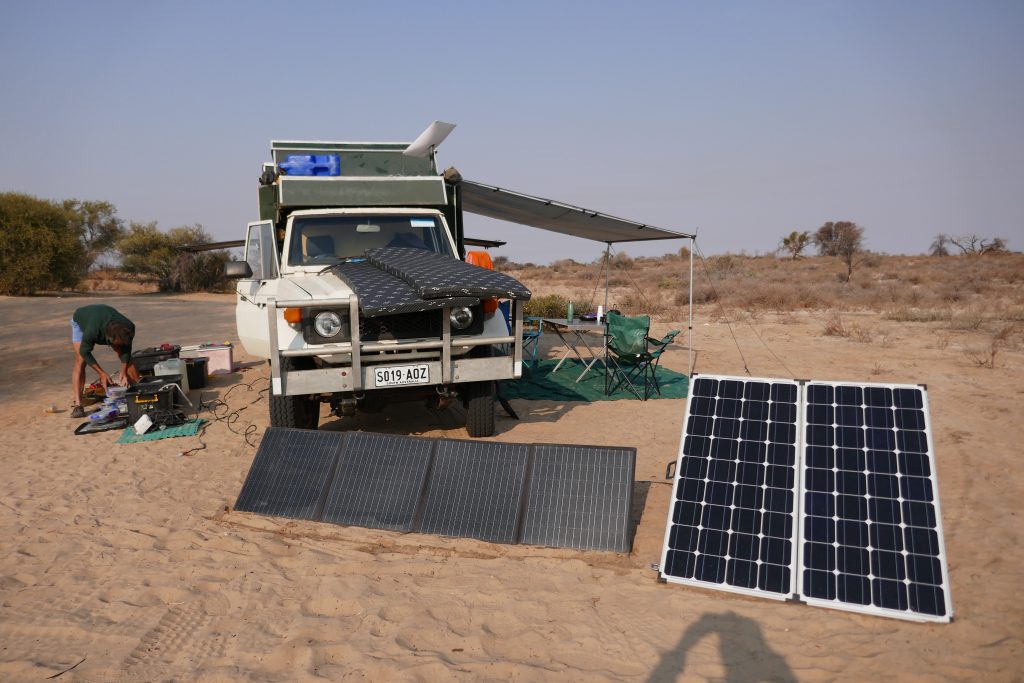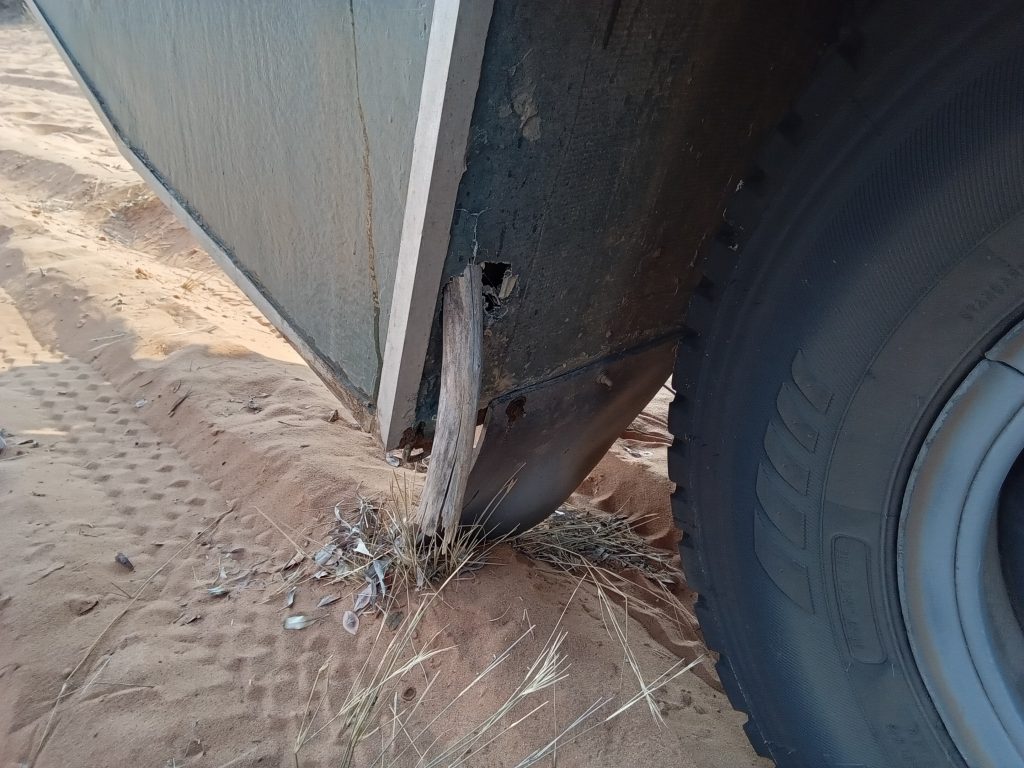Chitove camp was even better than Fishans camp. We were right next to the water. When we arrived, a couple of elephants left. We had crocodiles resting on the opposite bank. Baboons, Zebras, Elephants and more came down to the water, somewhere along the bank. There was pretty well something going on all day. After 3 nights at Chitove we headed about 60km to Chivillia. Firstly we needed to cross the Runde at a causeway, which we did without it being much more than 30cm deep. We then stopped on the opposite bank to watch a couple of hundred Cape Buffalo head into the water to drink. We then headed to Chilojo cliffs picnic area. There we watched an Elephant want across the Runde, eventually coming back to comprehensively scratch itself on a tree near us.
We continued on to Chivillia Camp which was a rocky downhill track. We were a bit disappointed with Chivillia, it was away from the water, and there were not a lot of animals. However the first night during dusk, Karen spotted a lion sitting about 100m away. It roared a few times then wandered off. We were pretty careful around camp the next two nights.
After 3 nights at Chivillia Camp we headed for the long drive south to Rossi Pools camp. Firstly we needed to detour to Chipinda Pools camps to get some extra water. Then it was the well built but steep winding descent to the Nkwangulatio causeway. The causeway was built in 2019, and was well done. We crossed it and continued south. We passed a couple of heavily armed rangers making patrols, then followed the electrified park fenceline for tens of kilometres. At 4:30pm and after a long day we arrived at Rossi Pools camp.






















































